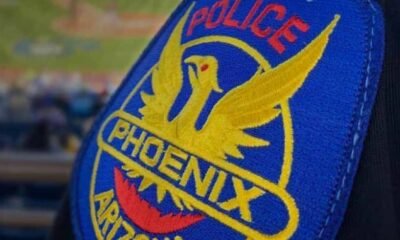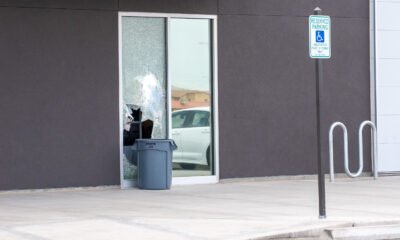arizona
Maricopa County Gears Up for ‘Election Super Bowl’: A Glimpse at the 2-Page Ballot

For the first time in nearly two decades, Maricopa County voters will encounter a two-page ballot in the upcoming election. Election officials express confidence in their preparations, describing this election as akin to the “Super Bowl.”
Scott Jarrett, the Maricopa County Director of Elections, highlighted the massive scope of work required for such a change. “It is an enormous amount of work to do in a very short time,” he stated during a press briefing. Approximately 13,000 different ballots will be issued, each featuring around 79 contests. These will span various races, including the presidential election, local school board positions, state legislature seats, and judicial retention votes. Last issued in 2006, the two-page ballot format will challenge voters with a high volume of information.
The increased length of the ballot is attributed primarily to a surge in ballot propositions, many introduced by Republican lawmakers to circumvent potential vetoes by Governor Katie Hobbs. This year’s offering marks the highest number of legislative referrals since 1984. Notably, nine out of Arizona’s 15 counties are implementing two-page ballots as well.
Within Maricopa County, the ballot’s length will vary by precinct. For instance, the longest ballot is in the Lonesome voting precinct in west Phoenix, contrasting with the Desert Oasis precinct, which has the shortest. This variability means that voters may encounter different issues depending on their location.
This year, to evaluate the two-page ballot format, the county conducted a mock election, identifying potential bottlenecks in the voting process. Significant delays during voting were observed primarily at booths and with on-site tabulators. To address these challenges, the number of tabulators at selected voting sites will increase from two to three, especially where higher turnout is anticipated.
Jarrett expressed confidence in the preparations made, stating that operational hiccups, such as longer lines, are to be expected in a standard election cycle. During the previous midterm elections, problems with ballot printers led to long delays at polling places. However, the county has since replaced those printers to ensure smoother operations.
To mitigate issues with the two-page format, education efforts are underway, emphasizing that early voters must submit both pages of their ballots. Sending only one page would result in incomplete votes across various races. Jarrett cautioned that voters living in different parts of the county should not mix their ballots, or else those votes may go uncounted.
As the workload increases with the change, the county has expanded staffing and introduced night shifts to meet reporting deadlines. Maricopa has approximately 14 days to complete tabulation, perform post-election testing, and prepare mandated reports, accounting for potential recounts.
New, faster tabulation equipment has been deployed, along with an increase in adjudication stations, which are essential for resolving ballot discrepancies. While not all ballots will be counted on election night, officials encourage early voting to facilitate a more efficient count and a smoother Election Day experience.
Jarrett predicts average wait times of 15 to 20 minutes, with some areas facing longer delays, particularly during peak voting times. Voters are advised to familiarize themselves with their ballots ahead of the election to ensure readiness for in-person voting on the day.
Early ballots for the general election are scheduled to be sent to voters beginning on October 9. Voters can access information about their ballots and registration status on the county’s dedicated website, BeBallotReady.Vote.


















